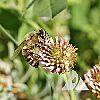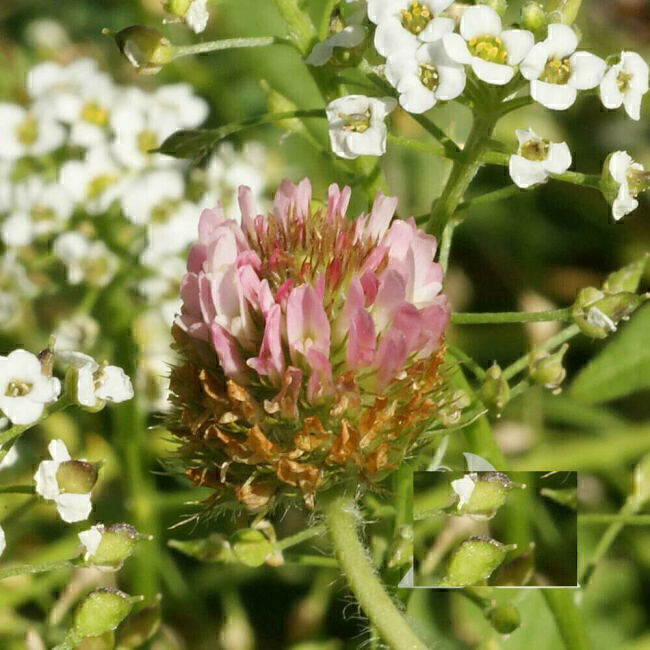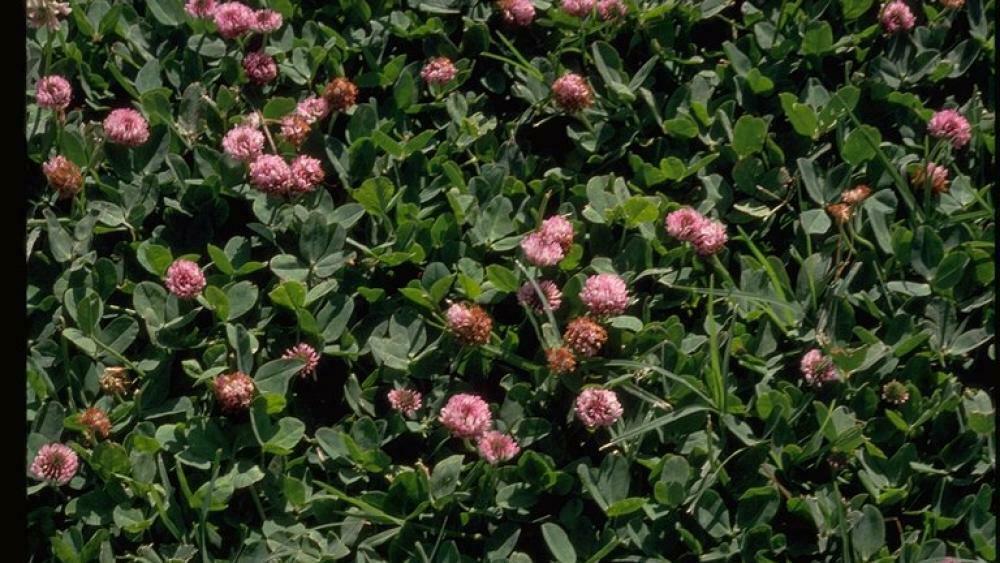STRAWBERRY CLOVER Perennial Groundcover Pollinator Wildlife Non-GMO 500 seeds No Fillers ? Pure Seed ? Non-GMO ? Safe Seed Pledge Strawberry Clover has about a 64% Germination so keep in mind when ordering. It is a Perennial and will expand year after year! Note: These are not Strawberry seeds but are STRAWBERRY CLOVER seeds. PRODUCT DESCRIPTION - Trifolium fragiferum
- Cool Season, Legume, Perennial, Moderate Water, Low Maintenance
- Strawberry Clover is a perennial legume that grows to 14 inches tall and produces pink to purplish red flowers.
- Plants produce creeping stems and can spread.
- When the seed is ripe, the flower heads become red and resemble strawberries.
- It will add nitrogen to the soil and is ideal for including in pasture and grass mixtures to provide food for
- pollinators. Forage and seeds are attractive to big and small game as well as upland birds.
- FRESH Strawberry Clover Seeds. Selected for it's Cold and Drought Hardiness. Great erosion control. Grows in almost any condition. Poor soil, soggy areas and other trouble spots.
- These beauties will grow in almost any climate. Provide Full Sun for optimum blooms but Clover will also fill in the shady areas. Wildlife and Insects of all varieties will benefit from an area of these colorful blooms. Butterflies, bees and other beneficial insects will be regular visitors.
- Great for Erosion Control. Deep Taproots minimize the amount of irrigation required. Rock Gardens, Meadow or Woodlands and Streambanks are likely spots for Strawberry Clover.
- Start your seeds in a few patches, see where they grow best in your garden. To Naturalize your Wildflowers allow them to continue their entire growth cycle. When the flowers drop their petals watch the pods form. The squirrels and birds will take their share and still be plenty for reseeding themselves for next year.
- As a thick growing ground cover with a dense sod, strawberry clover will choke out most weeds and unwanted plant life in the area that it?s planted. The dense cover will also protect your land against erosion from wind, water and animal traffic.
- You can use strawberry clover as a companion grass to your lawn, as it will offer nitrogen and other nutrients to your turf while not competing with it for space. The bloom of strawberry clover can also give your grass a bit of an X-factor, making for a beautiful look.
FAST FACTS - Plant Habit: Spreads by Runners, Readily Reseeds, Bedding (Ground Cover)
- Country/Region of Manufacture: United States
- Plant Type: Pastures, Orchards and Flood Areas, Erosion Control, Decorative Plant, Rockery Plant, Wild Plant
- Climate: Hardier than most other Clovers, Cold, Dry
- Sunlight: Full Sun, Partial Shade
- USDA Hardiness Zone (°F): Thrives in all but the moist arid zones
- Genus: Tifolium
- Species: Pea Family, adds nitrogen to your soil
- Common Name: Strawberry Clover
- Watering: Waterwise
- Life Cycle: Strawberry clover is a long lived perennial (Peaceful Valley, 1988) that roots at the the nodes of stolons (Gillett, 1985) and grows principally during the summer (McLeod, 1982). Flowering is during June and July (Duke, 1981). From 20-35% of seed may be hard. The species can be seeded in fall or during spring where moisture is adequate.
- Season of Interest: Enjoy Pollinators All Spring, Summer and Fall
HOW TO GROW STRAWBERRY CLOVER - Clover is easy and affordable to grow from seed, you can use as groundcover for poillinators around parts of your yard that you don?t mow or decide to make your yard all clover!
- Seed can be sown directly over established turf grasses. Mow your grass at a low setting and gently raking out any built-up thatch. Then mix seed with sand, sawdust, fine compost, or soil, to make even distribution easier. Broadcast seeds over the planting area.
|












